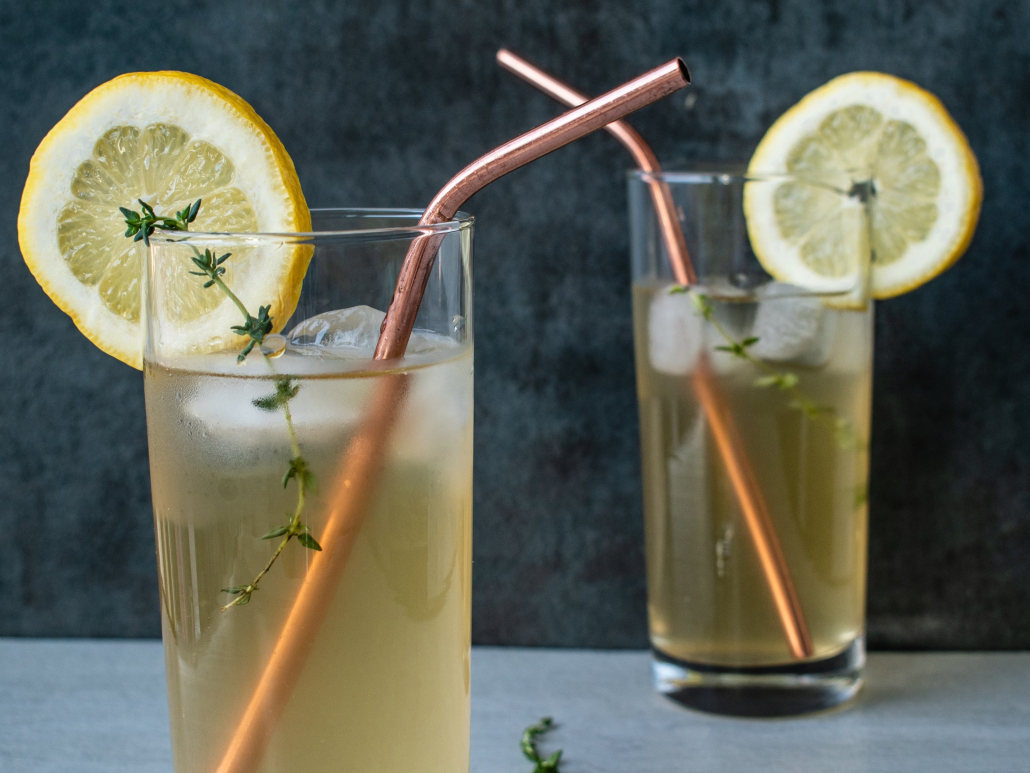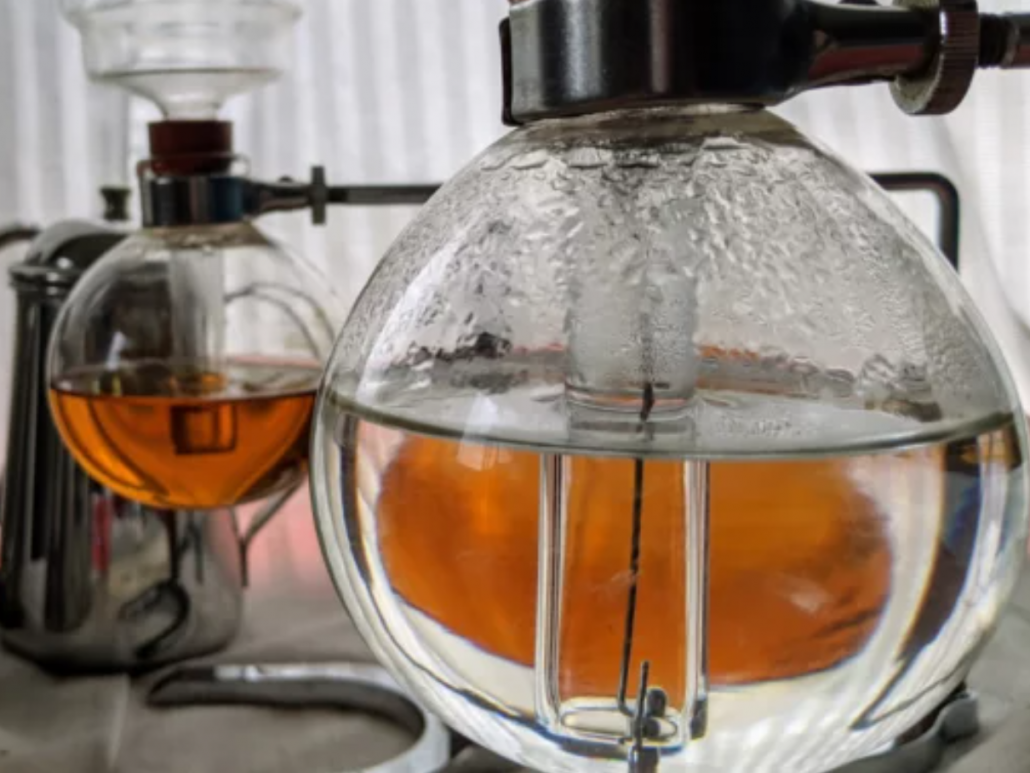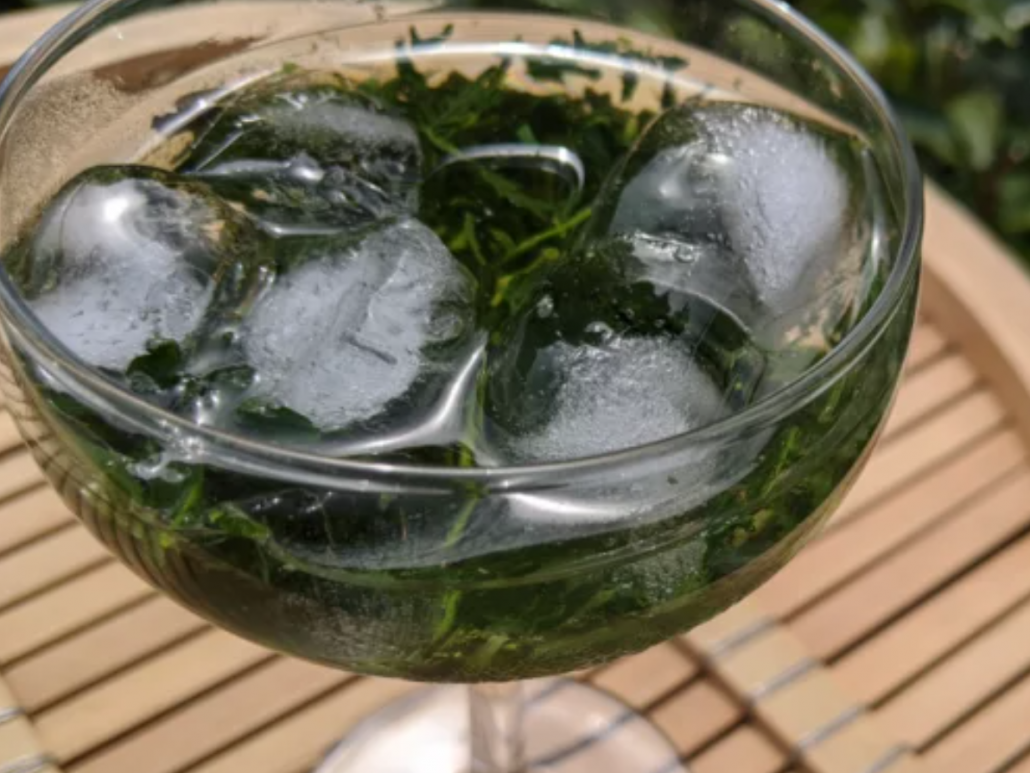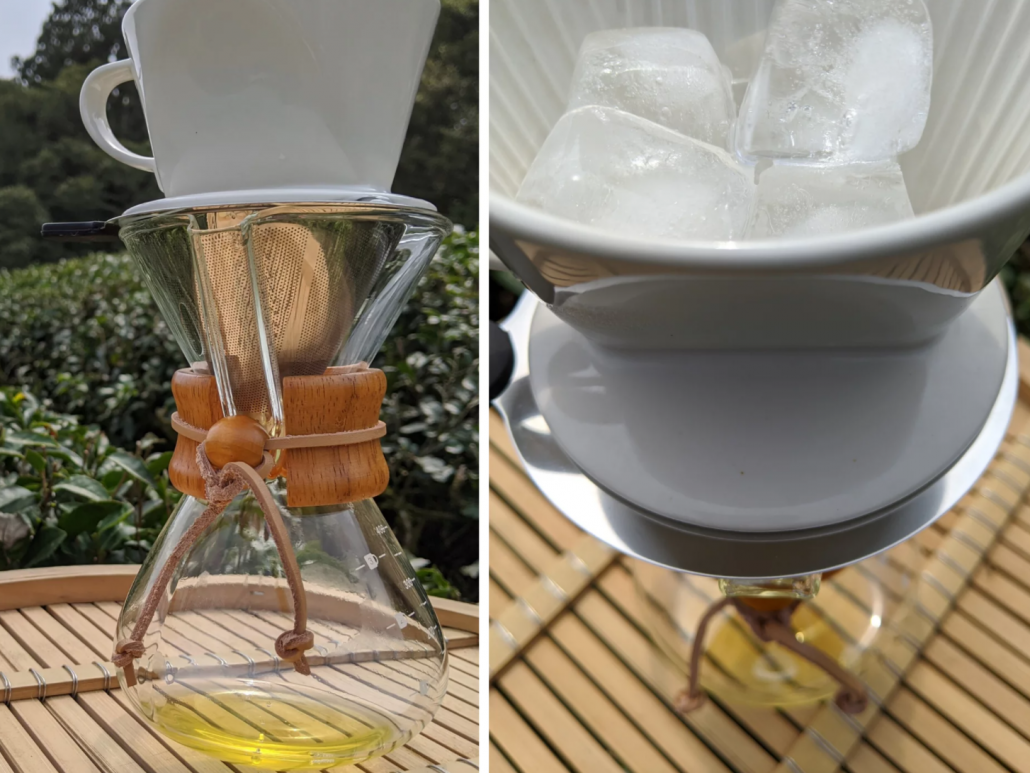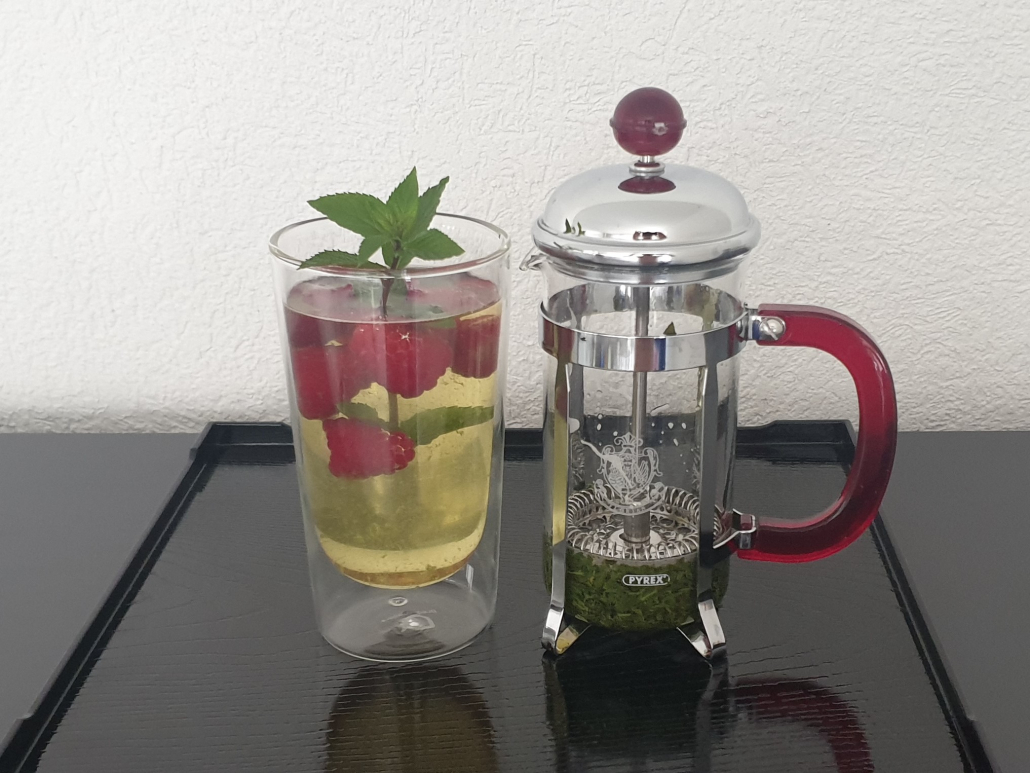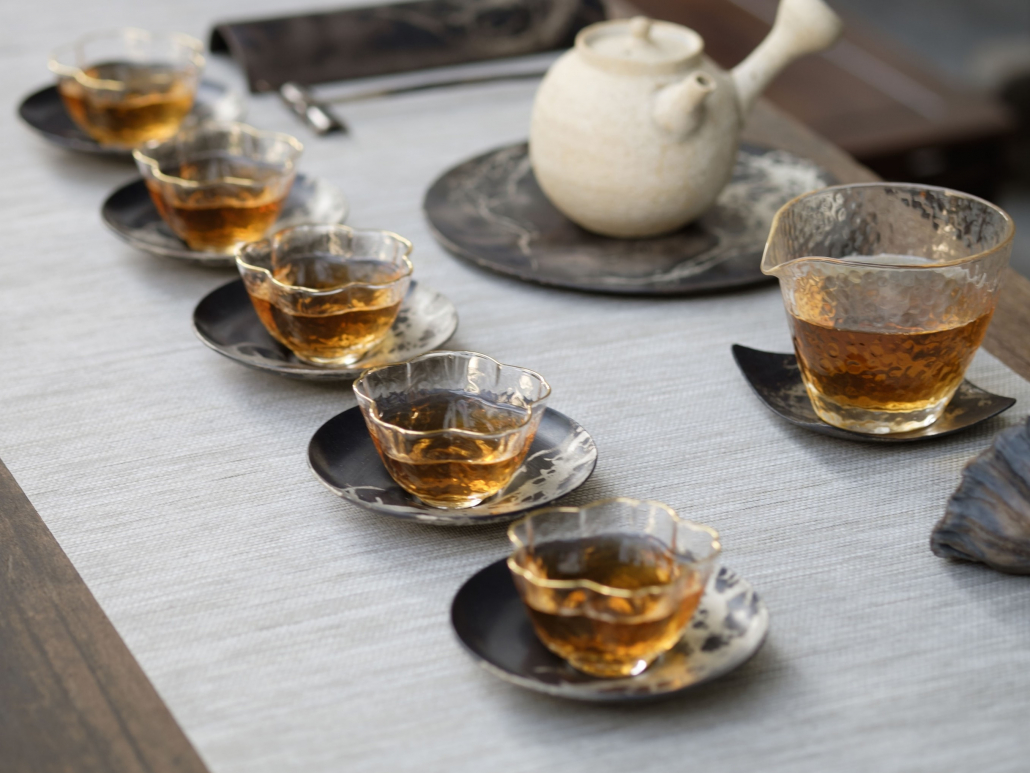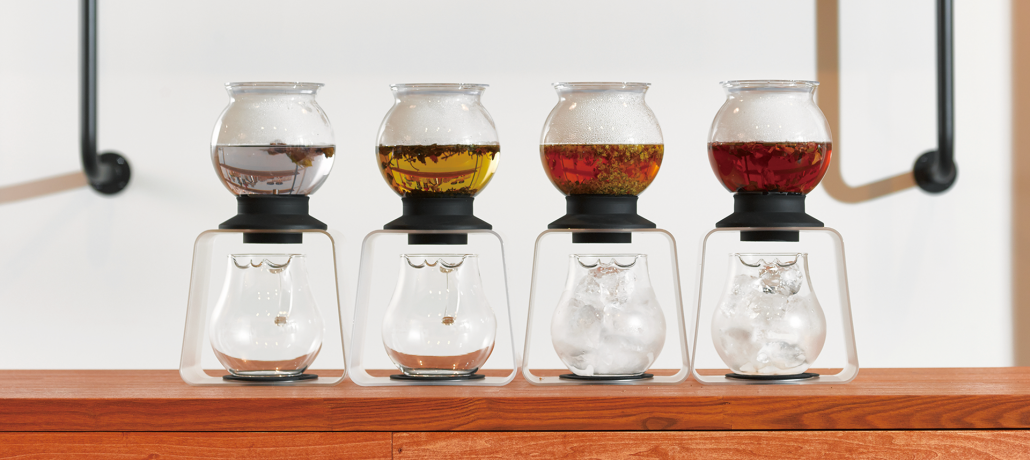By and large, the leaves of camellia sinensis are brought into contact with hot water in order to extract some of the leaf components to make a drink called tea. The numerous sub-varieties of the tea plant coupled with various processing methods lead to an almost endless array of teas. (It is said that there are more different kinds of tea than there are different kinds of wine). This notwithstanding, some have taken to unusual brewing methods. Here are some promising ones that you should try out:
A certified Tea Sommelier and self-proclaimed Ice Tea Master, Jee Choe explains in a few easy steps “How to Make Iced Sencha Properly“. (You will need to scroll down about midway).
After separating the light liquid from the leaves, it is worth pouring it over a few ice cubes in a tumbler and to play with decorative or olfactory elements such as thyme or twigs of peppermint.
Obubu intern Giedre Trumpiene has looked into siphon brewing Japanese teas.
Note that Giedre uses Hario’s coffee siphon (Click here) for her insightful experiments. In the meantime, the highly inventive Japan-based company Hario have also designed Tea Drippers (see below) for iced tea.
Giedre discovered this method in Japan and in her article (here) compares it with Ice Drip and Cold Brew
While it was originally dubbed ‘Tea over Ice’, I prefer to stack the ice cubes on top of the tea leaves and call it Ice over Tea. In my experiments, it often takes more than 2h for the cubes to melt and Ice over Tea gives the leaves more exposure time to the coldest water (Actually <1°C) you can possibly get in a private household. Also, while Ice over Tea looks sensational in a Martini glass, straining the liquid and serving it in a new glass (over ice) prevents you from getting tea leaves stuck in between your teeth. [/av_textblock] [/av_section] [av_section min_height='' min_height_pc='25' min_height_px='500px' padding='large' margin='aviaTBmargin' custom_margin='0px' custom_margin_sync='true' color='main_color' background='bg_color' custom_bg='#f3f5f7' background_gradient_color1='' background_gradient_color2='' background_gradient_direction='vertical' src='' attachment='' attachment_size='' attach='scroll' position='top left' repeat='no-repeat' video='' video_ratio='16:9' overlay_opacity='0.5' overlay_color='' overlay_pattern='' overlay_custom_pattern='' shadow='no-border-styling' bottom_border='no-border-styling' bottom_border_diagonal_color='#333333' bottom_border_diagonal_direction='' bottom_border_style='' custom_arrow_bg='' id='tea-boxs' custom_class='' aria_label='' av_element_hidden_in_editor='0' av_uid='av-kh8b4kap-32'] [av_two_fifth first min_height='av-equal-height-column' vertical_alignment='av-align-top' space='no_margin' row_boxshadow='aviaTBrow_boxshadow' row_boxshadow_color='' row_boxshadow_width='10' margin='0px' margin_sync='true' mobile_breaking='' border='' border_color='' radius='0px' radius_sync='true' padding='35px,25px,25px,35px' column_boxshadow='aviaTBcolumn_boxshadow' column_boxshadow_color='#7bb0e7' column_boxshadow_width='10' background='bg_color' background_color='#f3f5f7' background_gradient_color1='' background_gradient_color2='' background_gradient_direction='vertical' src='' attachment='' attachment_size='' background_position='top left' background_repeat='no-repeat' highlight_size='1.1' animation='' link='' linktarget='' link_hover='' title_attr='' alt_attr='' mobile_display='' id='' custom_class='' aria_label='' av_uid='av-kh8b6ps1-28'] [av_textblock size='' av-medium-font-size='' av-small-font-size='' av-mini-font-size='' font_color='' color='' id='' custom_class='' av_uid='av-kh8b34mp-24' admin_preview_bg='']
Here Giedre used a Hario V60 without filter (She has also performed an experiment with a coffee filter, here) and a few ice cubes.
In this experiment, you have the coldest possible water with absolutely minimal contact with the tea leaves. It is fascinating to see that this still produces a liquid that can be recognised as cold tea, but unfortunately this brewing method did not deliver a drink I greatly enjoyed.
What do you do if you are stuck in a hotel room with sencha but without recourse to hot water ? Just wait – between 15 and 60 minutes, depending on room temperature.
This is an extremely novel technique, which was first suggested to me by Vânia, who said that gyokuro ‘brewed’ at room temperature for about 15 minutes was great, too. If you come from black tea, this is entirely unexpected as the tea needs heat and time to develop (and as cold-brew shows, you can compensate lack of heat with extra time, but who would have thought that with some leaves you can reduce both and still obtain a nice ‘brew’ ?).
There are no precise parameters for this technique. Here are two approaches:
Addendum: Frozen raspberries help cool down the drink. In addition to this, they float while frozen and only gradually sink as they thaw.
Working with international interns, Obubu’s George noticed that even with the same water, the same tea leaves and identical equipment, the ‘same tea’ prepared by different people could taste different. Based on this observation, he suggested that I try to pour more sencha more slowly from a kyusu for a sweeter-tasting tea.
When using a Japanese kyusu, it is good practice to go back and forth between all cups and to thus evenly distribute the brew. Even the last drops, i.e. the water that has remained the longest in contact with the tea leaves, should be distributed fairly. (In the Chinese Gong Fu Cha, the same applies, but there it is also possible to pour the entire liquid into a fair cup first, from which the tea is then distributed to all the guests’ cups, to ensure everyone is treated equally).
In Japan, you often see people shake the last drops out of their kyusu. In the ultra-slow-pour method, I avoid this despite the Japanese insisting that the last drops are the most precious ones. Instead, I will typically steep the tea for about 1 minute and pour so slowly (into a fair cup) that it takes another minute to pour 200ml from a kyusu. The difference in taste is remarkable. In fact, there are particularly flat kyusu, often called hirakyusu, which are especially designed to minimise the movement of tea leaves.
Hario Tea Dripper Largo Stand Set:
Hario Japan, founded in 1921, specialises in heat resistant glassware (originally for the chemical industry). They have put an appealing video of their Tea Dripper here at Hario Global, and the visually highly attractive Stand Set is available from Hario Europe (here).

